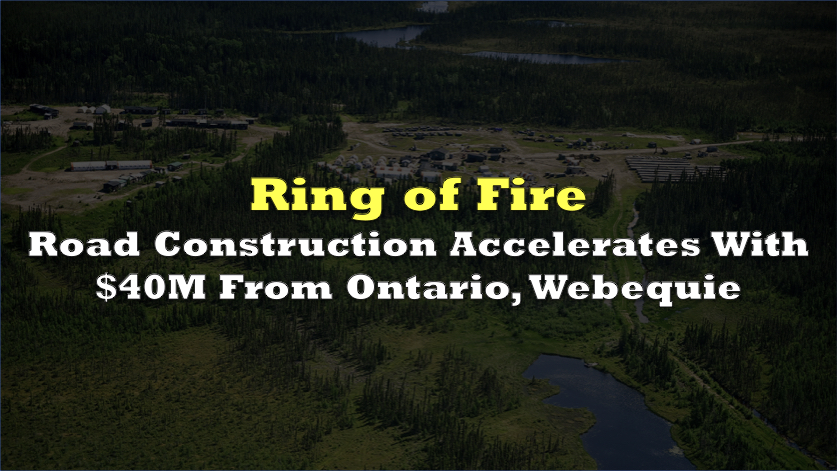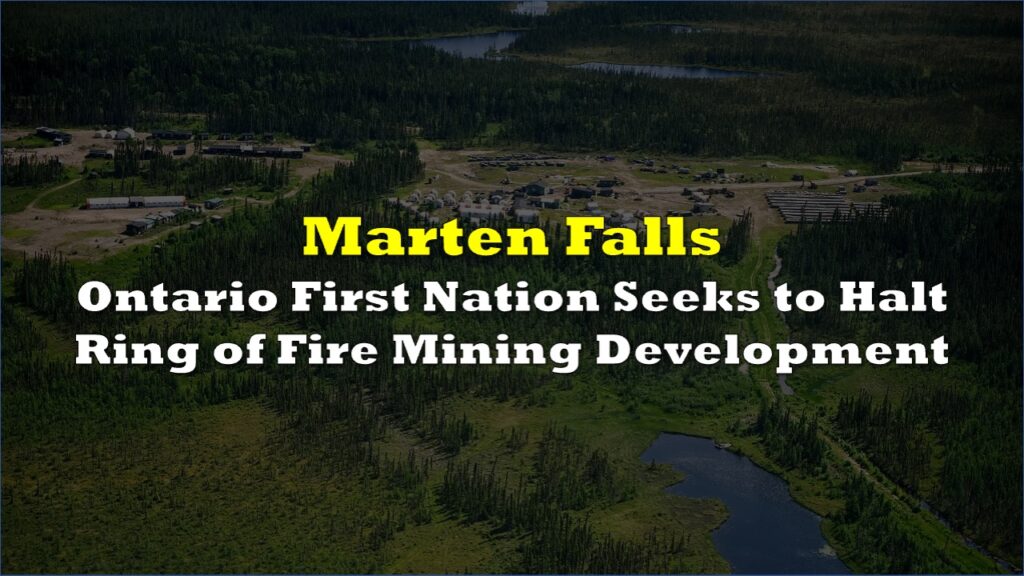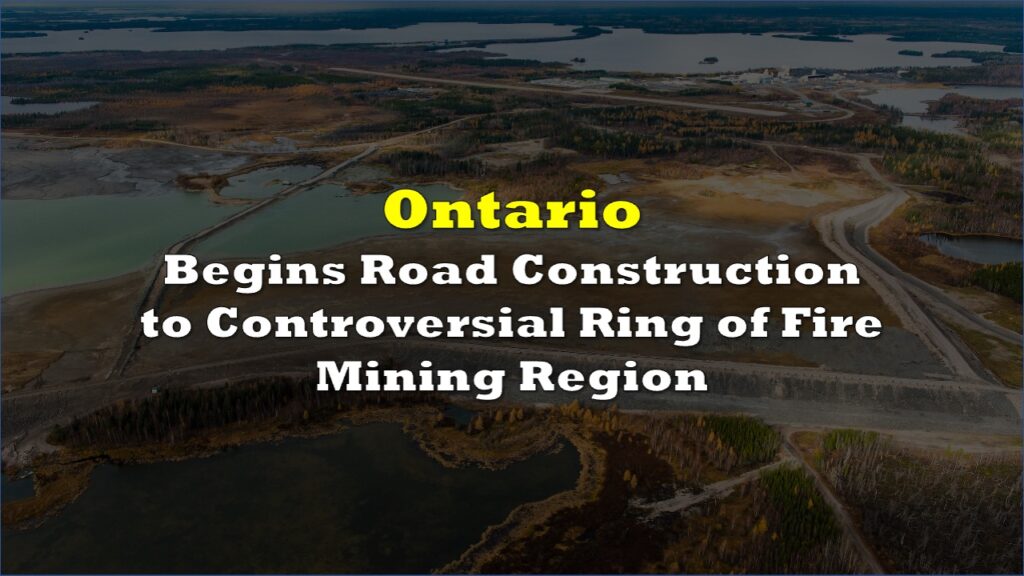Ontario and Webequie First Nation signed a partnership to accelerate road construction into the Ring of Fire, with the province committing nearly $40 million to community infrastructure and early works tied to the Webequie Supply Road.
The funding will build a community centre with an arena, replace the airport terminal that recently burned down, and purchase materials and equipment for initial road activities toward the proposed mining site.
Indigenous Affairs Minister Greg Rickford said the package also covers a new terminal, runway upgrades, a helicopter pad, and added electricity capacity to support business and industry growth.
“It’s an opportunity for us and we’d like to make that opportunity flourish,” Chief Cornelius Wabasse said, identifying badly needed mental health resources as part of the deal. He added that the agreement establishes an ongoing relationship with the province to identify further community improvements.
Access remains the central bottleneck the road seeks to solve. Webequie sits nearly 600 kilometres north of Thunder Bay and about 60 kilometres from current exploration inside the Ring of Fire. The community is reachable by air or via a winter road that has been shrinking in length due to climate change.
Webequie is leading the environmental assessment for its supply road and has completed the draft report stage after six years of work. Two additional road studies aim to complete the network. Webequie is co-leading the Northern Link Road to connect south toward Marten Falls First Nation, while Marten Falls is leading a third north-south road to tie the corridor into the provincial highway system.
Premier Doug Ford tied the road to future opportunity for Webequie’s youth and set an aggressive construction timeline, saying work on the Webequie Supply Road could begin as soon as next June. He said the federal government should drop its Impact Assessment on the supply road because it duplicates the nearly complete assessment led by Webequie.
“Prime Minister Carney made a commitment to us to get out of the way of nation building projects,” Ford said. “I look forward to getting our agreement across the finish line so we can move faster, be bolder, go further and build the future of our economy, starting in the Ring of Fire.”
Ford’s government passed Bill 5 in the spring to allow cabinet to suspend certain provincial and municipal laws within designated special economic zones to speed large mines. Rickford said no part of Bill 5 is in force in the Ring of Fire while Wabasse said Webequie still needs to study the law to determine what would work for the community.
Neskantaga First Nation Chief Gary Quisess criticized Ontario’s call to remove federal regulatory processes from the supply road file, calling the federal review the only process that guarantees a First Nation voice. He said Neskantaga has asked Ottawa to designate the proposed Eagle’s Nest mine, owned by Wyloo, for review under the Impact Assessment Act.
“Now he wants to dismantle the only federal process that gives us a voice in what happens to our lands. That’s not leadership — it’s colonialism in 2025,” Quisess said, adding that sacred burial sites and drinking water along the Attawapiskat River are at stake.
Webequie’s supply road could enter construction by June 2026 if Ontario’s position on federal review prevails and the community-led assessment is finalized.
Information for this briefing was found via The Canadian Press and the sources mentioned. The author has no securities or affiliations related to this organization. Not a recommendation to buy or sell. Always do additional research and consult a professional before purchasing a security. The author holds no licenses.









